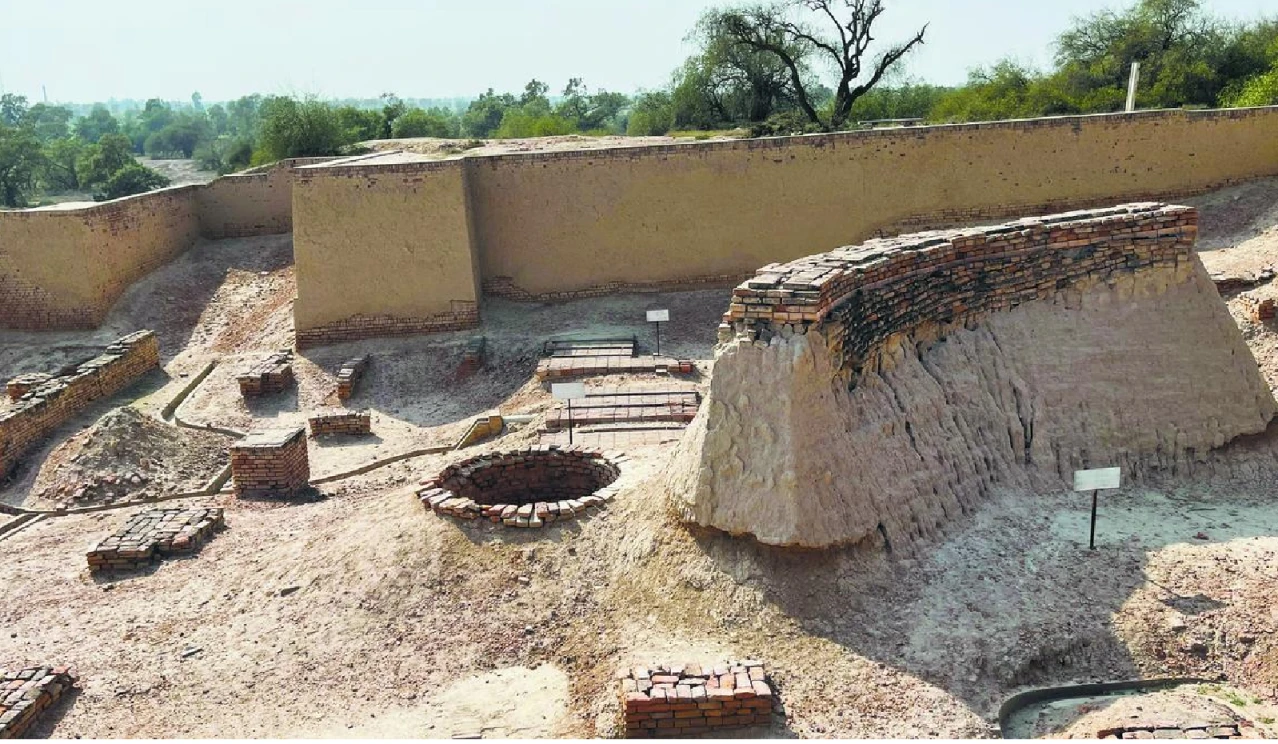The discovery made during an ongoing excavation identified a water storage area between mounds, with an estimated depth of 3.5 to 4 feet depicting their advanced water management techniques.
- A dried riverbed of the Chautang (or Drishavati) River, was also discovered.
Water management practices of the Harappan Civilization
- Elaborate Drainage: Underground drains build with precisely laid bricks, connecting houses to wider public drains were found for sewage disposal in major cities.
- Small Bunds: Built by the local people to store rain water for irrigation and drinking in Lothal, Gujarat.
- Dockyard: At Lothal, near Sabarmati River, is a remarkably lined structure with evidence of channels for inlet and outlet of water.
- Channels and Reservoirs: At Dholavira, Gujarat, built completely of stone for storing fresh water brought by the rains or to store water diverted from the nearby rivulets.
- They were an example of advanced hydraulic engineering for conservation, harvesting and storage of water.
- Tanks and Wells: At Mohenjodaro, where rainwater harvested in tanks was brought to the wells of each house through efficient drainage system.
- The “Great Bath” at Mohenjodaro was a large tank made of brick floor, probably for mass bathing during religious functions, is a remarkable example of ancient large water tanks.
About Rakhigarhi
|




